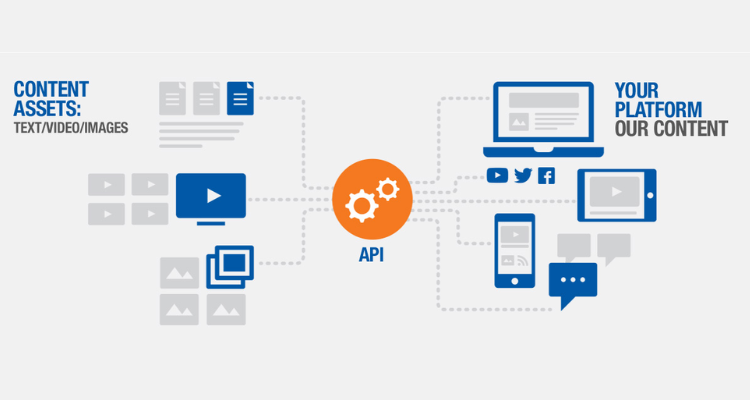Google Search Algorithm Data Leak: Things To Know
The Internet is blowing up with the news of a possible mistake by Rank Fishkin and Mike King. This is because of a major data leak of officially classified Google documents. These documents were anonymously revealed through an unknown source. However, after investigation, the information was revealed. The Google search algorithm data leak can lead to big answers in the Search Engine industry.
The major answers leaked through the document concerned the working process of Google search. What has been shocking to people is that much of this data contradicts what Google has publicly stated over the years.
What makes us so sure that this data is true? Many ex-Google employees have authenticated it and claimed it to be true.
Contents
- 1 Google Search Algorithm Data Leak: What Has Been Revealed?
- 1.1 Clickstream Data
- 1.2 NavBoost
- 1.3 Click Spam
- 1.4 User Intent Queries
- 1.5 Quality of the Site
- 1.6 Geographical Impact
- 2 Statistics of the Revealed Data
- 3 Can the Leak be Trusted?
- 4 Google’s API Content Warehouse?
- 5 How much can be Trusted?
- 6 What can be learned from the Leak?
- 6.1 Clicks, CTR, and User Data
- 6.2 Chrome Browser Clickstream to power Google Search
- 6.3 Whitelists in Travel, Covid, and Politics
- 6.4 Quality Rater Feedback
- 6.5 Determining Weight Links in Trafficking
- 7 FAQs
- 7.1 Is Google’s search algorithm a secret?
- 7.2 What algorithm does Google use for the search results?
- 7.3 Is Google hiding search results?
- 7.4 How complex is Google’s algorithm?
- 7.5 When did Google’s search algorithm get leaked?
- 7.6 Is the Google data leak true?
- 8 Conclusions
Google Search Algorithm Data Leak: What Has Been Revealed?
A lot of these claims have seemed extraordinary. These include:
Clickstream Data
In the initial years, the Google search team stated that a huge percentage of users needed full-stream data to improve the results provided by their respective search engines.
NavBoost
“NavBoost” is a system that collects data from Google’s toolbar, PageRank. The desire for more clickstream data was also the main motivation behind the formation of the Chrome browser.

NavBoost uses multiple searches to help a keyword find the trending search demand, the number of clicks, and the gap between the long and short clicks.
Click Spam
Google uses multiple means to fight automated and manual click spam. Some of these are cookie history and logged-in Chrome data. It also addresses pattern detection as “unsquashed clicks” versus “squashed” clicks in the revealed data.
User Intent Queries
NavBoost also makes out the queries and questions related to the user intent.
For example, a certain landmark number of clicks on specific videos or images will result in that query’s video or image features. This will also include the related NavBoost-associated queries.
Google examines the engagement or number of clicks a particular image or video gets during and after the main query.
For example, if a user is looking for “forex strategies,” it does not reflect techwhoop on the searches, and the person immediately changes the search to “techwhoop”. If you now click on techwhoop.com, the website will be uplifted when searching” forex strategies”. As a query, this keyword will give a result where techwhoop will be more visible.
Quality of the Site
The NavBoost data also helps at the host level to evaluate the overall quality of a specific site. Some sources claim that this could be what Google and SEOs claim to be “Panda”. The evaluation could either result in a boost or a demotion for the website.
Geographical Impact
NavBoost geo-fenced the data. The click data is presented considering the country or state/province. This is followed by mobile versus desktop employment.
However, in a scenario where Google doesn’t have enough data for a certain region, the query result will be the one that is universally implemented.
Similarly, during the COVID-19 pandemic or democratic elections, Google employs websites that could appear at the top of the results for COVID-related or reflection-related information.
Statistics of the Revealed Data
The leak contains over 2,500 pages of documentation related to API and 14,014 attributes, also called API features. According to sources, it originates from “Content API Warehouse” (internal).

According to the commit history, as seen in the document, the code was uploaded to GitHub on 27 March 2024 and wasn’t taken down until 7 May 2024.
Now, the document does not reveal everything. There are no details of the weight of any specific elements, so nothing about the search engine algorithm is given in the context of the weight. There is also no proof of the elements employed during the ranking system.
Despite this, the details about the data Google collects in the Google search algorithm data leak are extremely crucial.
Can the Leak be Trusted?
A lot of these details are often rumors and can be easily forged. So, it is important to authenticate whether all of this is true.
After some research and discussions with ex-Google employees, it has become clear that the document is, after all, original.
They claim that the document includes all the hallmarks of an internal Google API. The API is said to be Java-based, and much time has been spent adhering to Google’s internal standards. This concerns the documentation and the naming of the document.
The ex-Googlers claimed that the leaked document had something to match with the internal documents.
While many were sure the information was legit, others said they couldn’t access this code or were uncomfortable commenting on it.
SEO expert Mike King claimed that the document appeared to be a legitimate set of documents inside the Google division. It contained major information about previously unconfirmed and unsure about Google’s inner workings.
Google’s API Content Warehouse?
The leaked content may have come from Git Hub. The most acceptable explanation is that it was made public by mistake. Between March and May, information was accidentally shared, and the document was spread to Hexdocs. It was then found and circulated by other sources.
Almost all the Google teams have such documentation explaining API’s different attributes. Along with this, they also have modules that aid in familiarizing those working on the project (with the data elements).

The leak replicates the others in public GitHub repositories and on Google’s Cloud API documentation. They share the same notion style, formatting, process/module names, and references.
These documents are guidelines for Goggle’s search engine team members, which helps clarify their content. They contain some of the most secretive details in the world.
In a very long time, a leak of this extension has never occurred by the Google search division.
How much can be Trusted?
It is open to interpretation. It is subjective to know how certain we can be that Google’s search engine uses everything mentioned in the API document. There are multiple possibilities regarding the usage of what has been made available.
It is possible that much of this has become outdated and is not used anymore. Some features might have only been used for testing, while others might never have been employed.
But this is where the other side of the leaked document comes into the picture. It includes references that deprecate specific notes and features. These help indicate what should not be used anymore. This gives us an idea that the ones that were not marked with any of these signs are possibly the ones that are still actively used.
Also, is the leak of the latest or an older version? An older version’s leak does not hold any value to the insiders or the public. The latest date on the references was the API documents of August 2023.
So, broadly speaking, the document was mostly up to date until last summer. If no updates have occurred since August 2023, it could have been updated until March 2024.
Now, Google searches and trends are very transient. They change very regularly over months and years. If we look into the leaked data, the much-maligned AI Overviews, one of the most recent introductions, are not mentioned in the document.
Hence, what part of the document is relevant today and what has gone obsolete is open to interpretation and cannot be objective.
What can be learned from the Leak?
Once interpreted rightly, this kind of data can be useful for many users, including companies, websites, and individuals.
This data set can generate marketing-applicable insights for the next few years. However, the data is too massive to be deciphered in a few days or weeks, so comprehending it will not be easy.

However, a set of key takeaways from this data can be made that shed light on many of the company’s statements over the years regarding public aid and others.
These are the main takeaways:
Clicks, CTR, and User Data
A bunch of data in the document gives references to certain features such as “goodClicks,” “badClicks,” “lastLongestClicks,” impressions, squashed, unsquashed, and unicorn clicks.
All of these are tied to NavBoost and Glue, the two most familiar words for people who have reviewed Google’s DOJ testimony.
It seems like Google might have a way of filtering out clicks so they won’t have to count them in the ranking system. It is important to note that the number of clicks and the click length are considered.
Chrome Browser Clickstream to power Google Search
According to sources, Google was trying to find a way to access the clickstream of billions of users. Today, Chrome has made this possible, and they have it.
According to the document, google has been and can calculate several metrics that can be called using chrom views.
Whitelists in Travel, Covid, and Politics
Those who have visited travel websites through Chrome know that Google uses whitelist exits for the travel sector. But this is not the end of the story.
There are references to flags of “isCovidLocalAuthority” and “isElectionAuthority,” which suggests that Google is whitelisting a wide range of domains.
This is because Google is usually the first place people visit when an event occurs. If the search engine gives them propaganda-influenced data, its credibility will be lost. This is especially true in the case of election-related news.
Quality Rater Feedback
EWOK is a long-held quality rating platform by Google. The leaked data confirm that Google uses data from here in its search systems.
It is unclear how influential these rate-based systems are and what their use is. However, it is not impossible to decipher through the leak how much work the quality rater feedback has.
Determining Weight Links in Trafficking
This information comes directly from the anonymous sources who initially shared the leak. According to them, Google has three tiers for classifying its link indexes: low, medium, and high quality.

Click data determines which link graph index tier a particular document belongs to.
So, if a link is categorized as trusted because of its high tier index, it can flow PageRank and anchors, or the link spam system can filter it.
However, this does not necessarily mean that if there are links to a low-index site, they will affect the site’s ranking. These will simply be ignored, and no impact will be seen on them.
No clicks mean the site goes into a low-quality index, and the link is ignored. On the other hand, higher clicks from verified websites mean that the rink will pass the ranking. Symbols.
FAQs
Is Google’s search algorithm a secret?
The internal documents defining how the search engine works are extremely classified. But recently, a Google search algorithm data leak occurred as a result of work by GitHub. These documents contain a lot of information opposing what Google has been stating for years.
What algorithm does Google use for the search results?
Google uses the PageRank (PR) algorithm, which helps rank websites and, hence, gives search engine results.
Is Google hiding search results?
For a lot of years, Google has shown the number of search results that come back from a given query. This hasn’t gone away, but the search is no longer showing the exact number by default. It has to be checked.
How complex is Google’s algorithm?
While it is subjective from person to person how hard they find something, comprehending the Google algorithm is not the easiest task. It has thousands of features and is one of the largest algorithm set-ups ever.
When did Google’s search algorithm get leaked?
Google’s algorithm, which does not seem intentional and is possibly a mistake, was leaked in March 2024. Many interpretations of the data present in the document have been made, but a full hundred percent surety can not be made about such delicate data.
Is the Google data leak true?
While there were questions about the authenticity of the leaked Google algorithm data, according to many ex-googlers, the data is 100% true. It is a possible mistake through which many realities have been leaked. If anyone is trying to understand Google’s Search engine optimization, this data does reveal a lot, and it is authentic and testifies (partially through sources of ex-employees at Google).
Conclusions
While the Google search algorithm data leak might have been a blunder from the company’s end, the public has addressed it with greater joy. It has led to bigger truths about a company everyone has questions about. Over the years, many public statements given by company officials have been termed “fishy,” and people haven’t been satisfied with the answers they have received.
As a result of this Google search algorithm data leak, many of these answers have come forward by default and left people in utter shock. Most of what these documents show greatly contradicts what the company has told the public for many years.
The Google algorithm is a tedious and complex system to understand. But this data leak will make many things easier for people to understand.
Original: Aloukik Rathore

